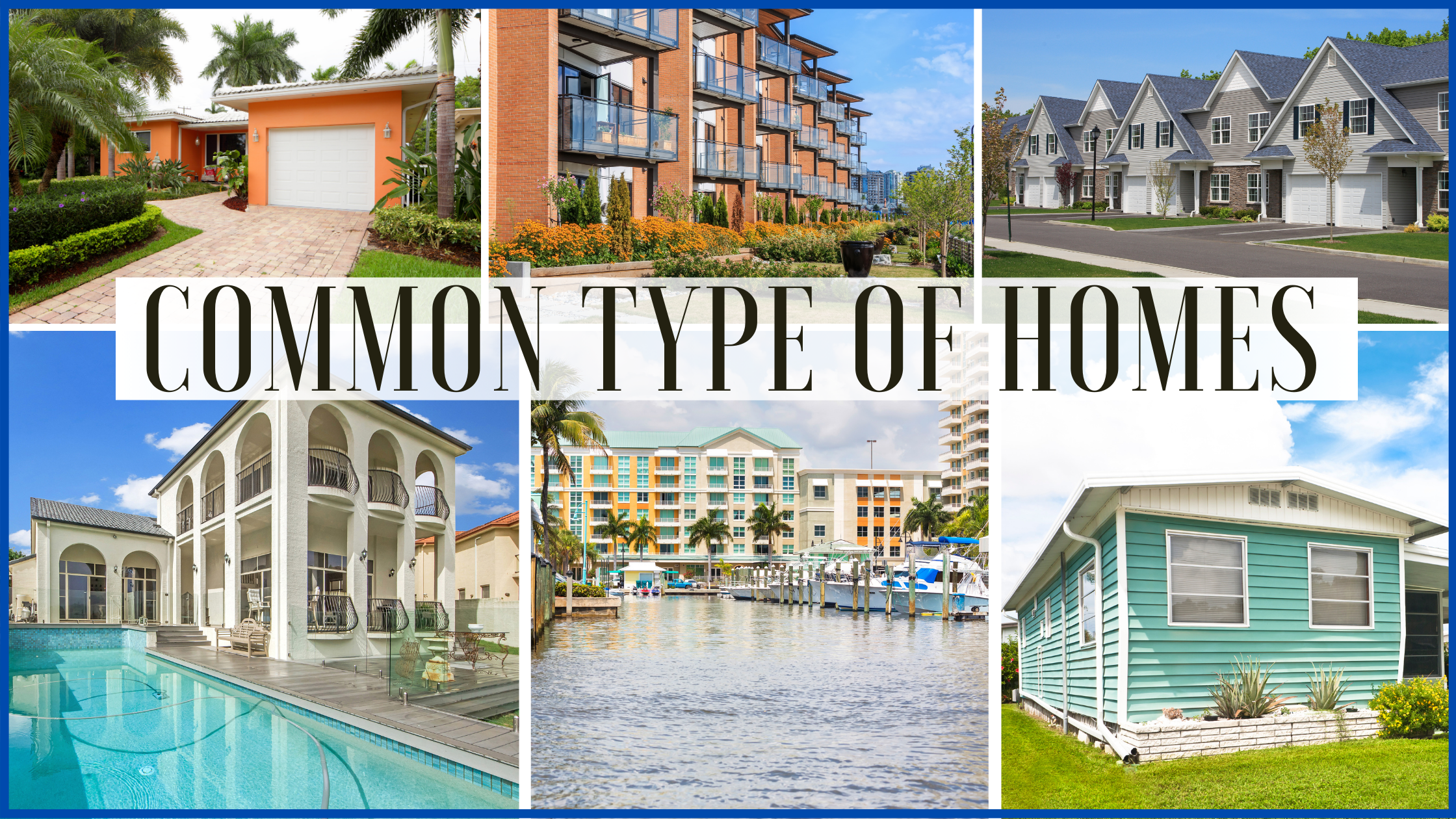Single-family Type of Home
A single-family (home, house, or dwelling) means that the building is a structure that has been preserved and used as a single unit of residence. While a dwelling unit shares one or more walls with another dwelling unit, if it has direct access to a street or thoroughfare and does not share heating facilities, hot water facilities, or any other critical facilities or services with any other dwelling unit, it is a single-family home.
Single-family homes may or may not be part of planned development, and while many are part of a POA/HOA structure within the community, most are simply part of existing towns with no association.
Apartment building Type of Home
An apartment (American English) or flat (British English, Indian English) is a housing unit that is self-contained (a form of residential real estate) and occupies only part of a house, usually on a single floor. The tenure of apartments often differs greatly, from large-scale public housing to the occupancy of the owner within what is legally a condominium (strata title or commonhold), to tenants renting from a private landlord.
Townhomes or Townhouse
A townhouse has two connotations in the United States and Canada. The older one predates the car and denotes a house on a small footprint in a neighborhood, but it has a large living space due to its multiple floors (sometimes six or more), sometimes with servants' quarters. The townhouse's small footprint allows it to be within walking or mass-transit distance of the town's business and industrial areas, but spacious enough for the city's affluent residents.
Villas
In the haciendas of Latin America and the estancias of Brazil and Argentina, the villa idea has existed and lives on. The oldest is the original Portuguese and Spanish Colonial architecture, followed by the Spanish Colonial Revival style with regional variations after independence from Spain and Portugal in the Americas. Roberto Burle Marx, Oscar Niemeyer, Luis Barragán, and other architects designed International Style villas in the 20th century, creating a special Euro-Latin synthesized esthetic.
Villas are particularly well represented in California and the United States' West Coast, where they were originally commissioned by well-traveled "upper-class" patrons moving on from Victorian architecture and Beaux-Arts architecture in the Queen Anne style. A few examples of villa density are neighborhoods like Montecito, Pasadena, Bel Air, Beverly Hills, and San Marino in Southern California, and Atherton and Piedmont in the San Francisco Bay Area.
Condominiums
Wide apartment-like buildings or collections of smaller attached buildings can be condominiums.
A condominium is a broad complex of properties separated into individual units and sold. Ownership typically entails a non-exclusive interest in such "community property" owned by the management of the condominium. Condominium management typically consists of a board of unit owners, such as lawn care and snow removal, who see the day-to-day running of the complex.
Townhomes, villas, and condominiums
Usually, they are established within a larger developed community as a smaller village, often based around a specific lifestyle such as a country club or waterfront.
Mobile or manufactured homes
Manufactured housing (commonly referred to in the United States as mobile homes) is a form of prefabricated housing that is mostly manufactured in factories and then transported to places of use. In the United States, the meaning of the term is regulated by federal law (Code of Federal Regulations, 24 CFR 3280): "Manufactured homes are built as dwelling units of at least 320 square feet (30 m2) in size with a permanent chassis to assure the initial and continued transportability of the home." The requirement to have a permanently attached wheeled chassis differentiates "manufactured housing"

